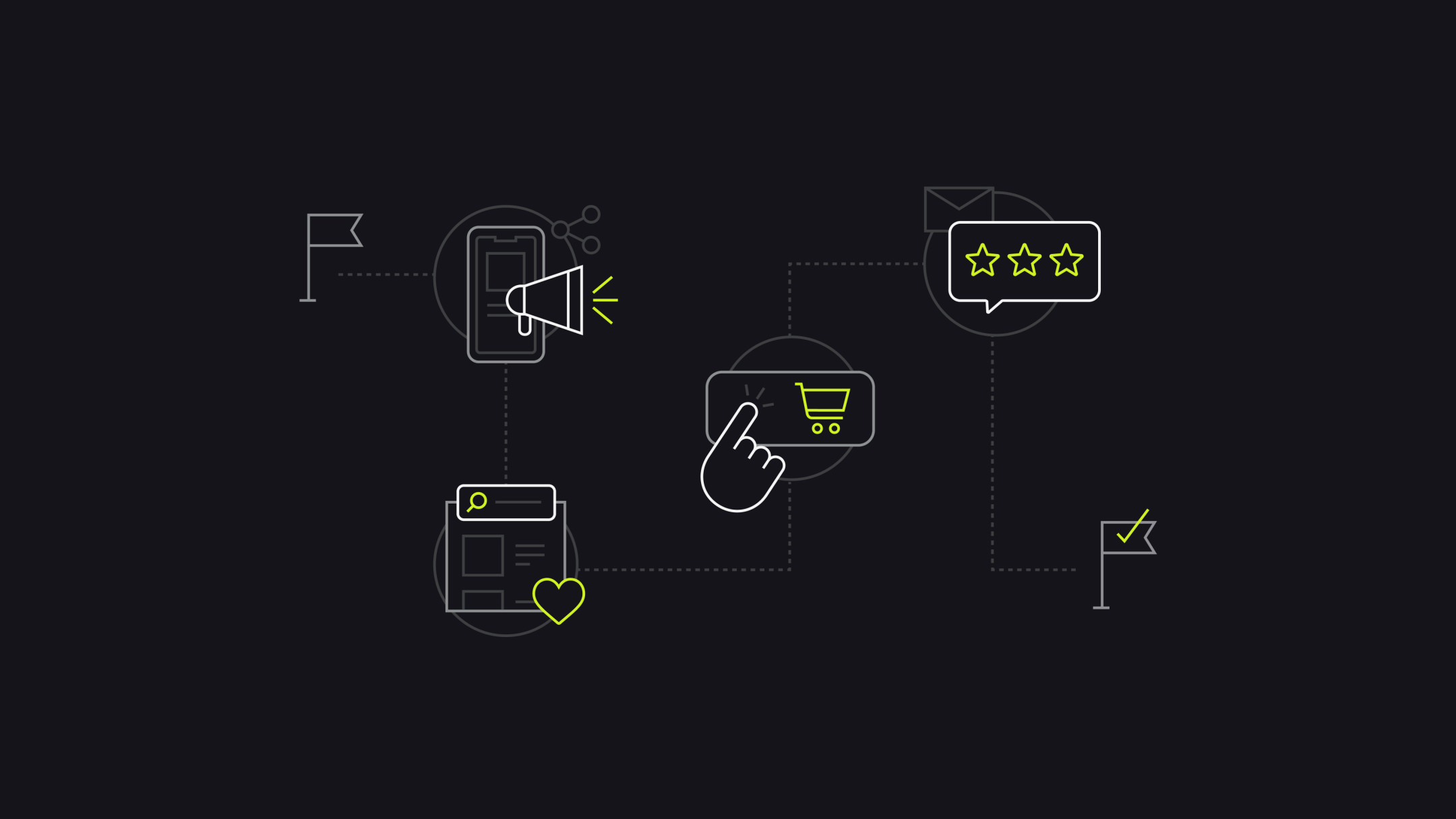Editor's Note:This post was originally published February 2018 and has since been updated for accuracy.
Can I have your attention, please? Statistically speaking ... probably not.
If I had to guess, 20% of the people who clicked on this article have already decided they have somewhere else to be. Inecommerce, it’s even worse.
Of course, who can blame them? With all of today’s online noise, it’s hard enoughgettingsomeone’s attention. Transforming that attention into a long-term customer relationship can feel near impossible—especially when you’re operating at scale.
In his bookX: The Experience When Business Meets Design, Brian Solis offers a way forward:
“Experiences are more important than products now. In fact, experiences are products.”
“People increasingly share their experiences with companies and products in our connected economy, and we can either be active participants in creating and nurturing desired experiences or spend more and more time trying to react or make up for bad experiences.”
Just as in real life, a customer’s experience with your brand is all about the journey. But the only way to bring that journey to life in a reliable, repeatable way is through data
Not on Shopify Plus? Keep reading to download the Personas and Customer Journey Map Template orconnect with us today.
Manage Customer Journeys, Not Lifecycles
Much like Solis, Kerry Munro, VP of Ecommerce at Home Depot Canada, alsofocuses on experience:
“[A connected experience] is all about ensuring the customer enjoys the experience of shopping with you, that you have the right products, that those products are available when they’re looking for them, and that when they have a question or a concern that someone is there to help.”
“That’s across all mediums, whether it’s a call center, a chat environment online, ecommerce versus instore, or now omnichannel.”
That focus sounds great in theory, but while customer experience management is “on thetop of every C-Suite executive’s list,” the reality is designing a robustomnichannel retailingstrategy and “managing the customer experience within the entire customer lifecycle is virtually impossible.”
While perhaps unintentional, the following image shows just how overwhelming exhaustive approaches can be:
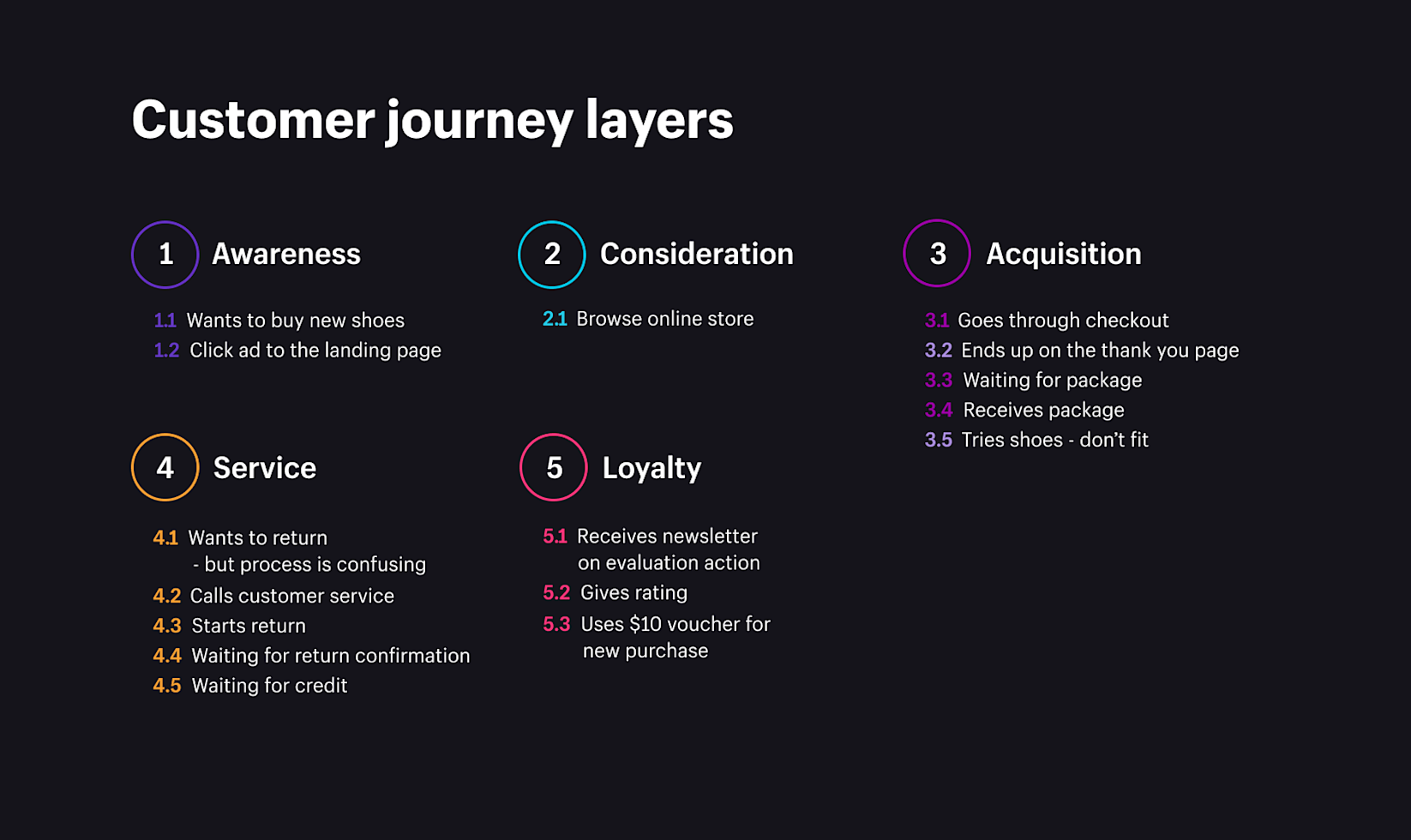
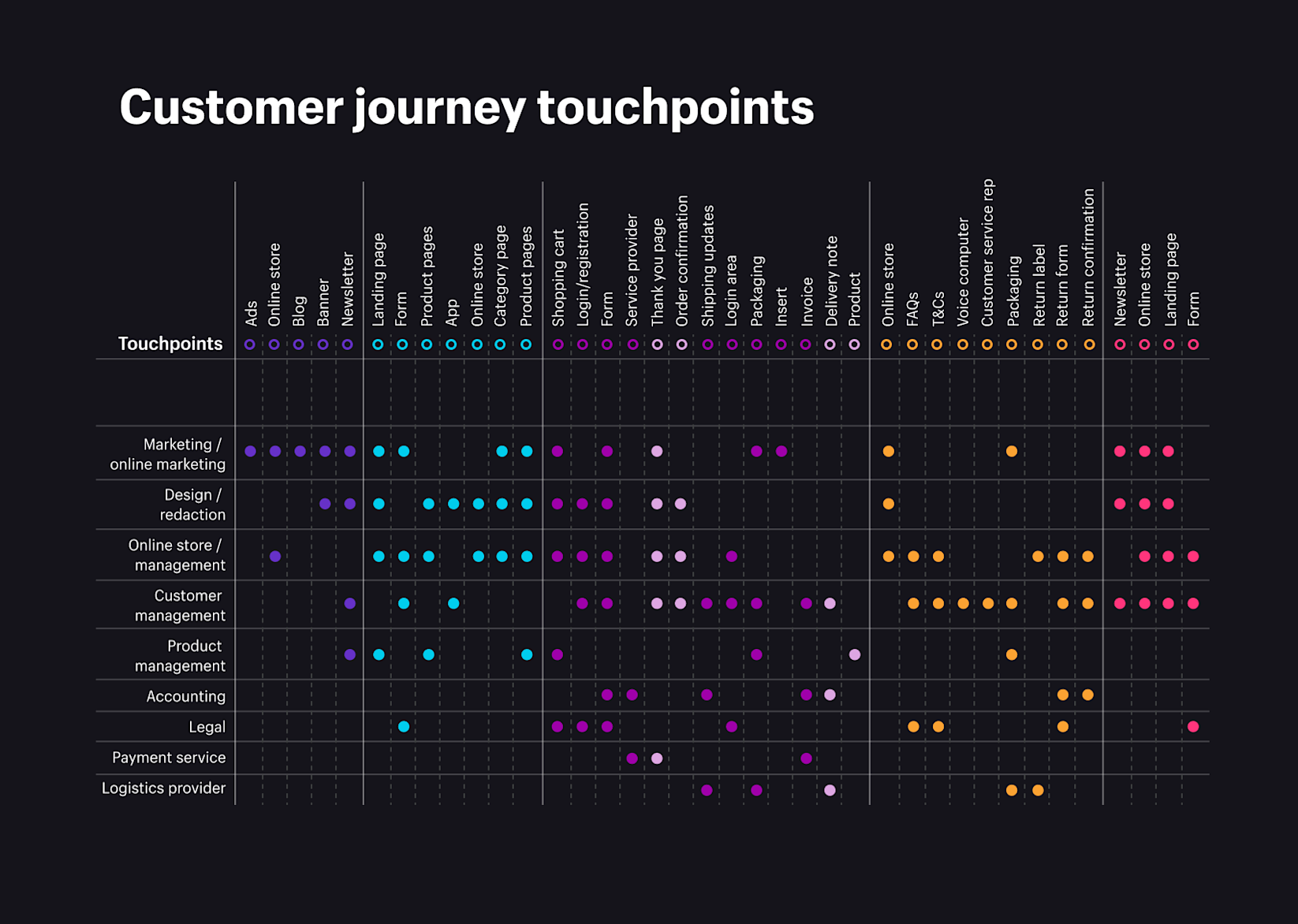
Instead, a far better approach is to identify your most valuable customers (i.e. personas) and map their journeys one stage at a time.
Mapping the customer journey
Harvard Business Reviewdefines a customer journey map as:
“A diagram that illustrates the steps your customer(s) go through in engaging with your company, whether it is a product, an online experience, retail experience, or a service, or any combination.”
“The more touchpoints you have, the more complicated—but necessary—such a map becomes.”
As the Stages of Change Model told us inCustomer Psychology in Ecommerce: Behavior Change in the Digital Age, one slip up from an external force can cause a person to either progress or regress in their journey. The wrong message at the wrong time can force people to flee. On the other hand, matching your offer to the right stage with a smallpersonal touchworks like magic.
Customer journey maps help you keep it all straight.
They tell you where users are coming from, how many days or visits it takes to move from one stage to another, what the goal of the user is in each stage, and how each segment behaves.
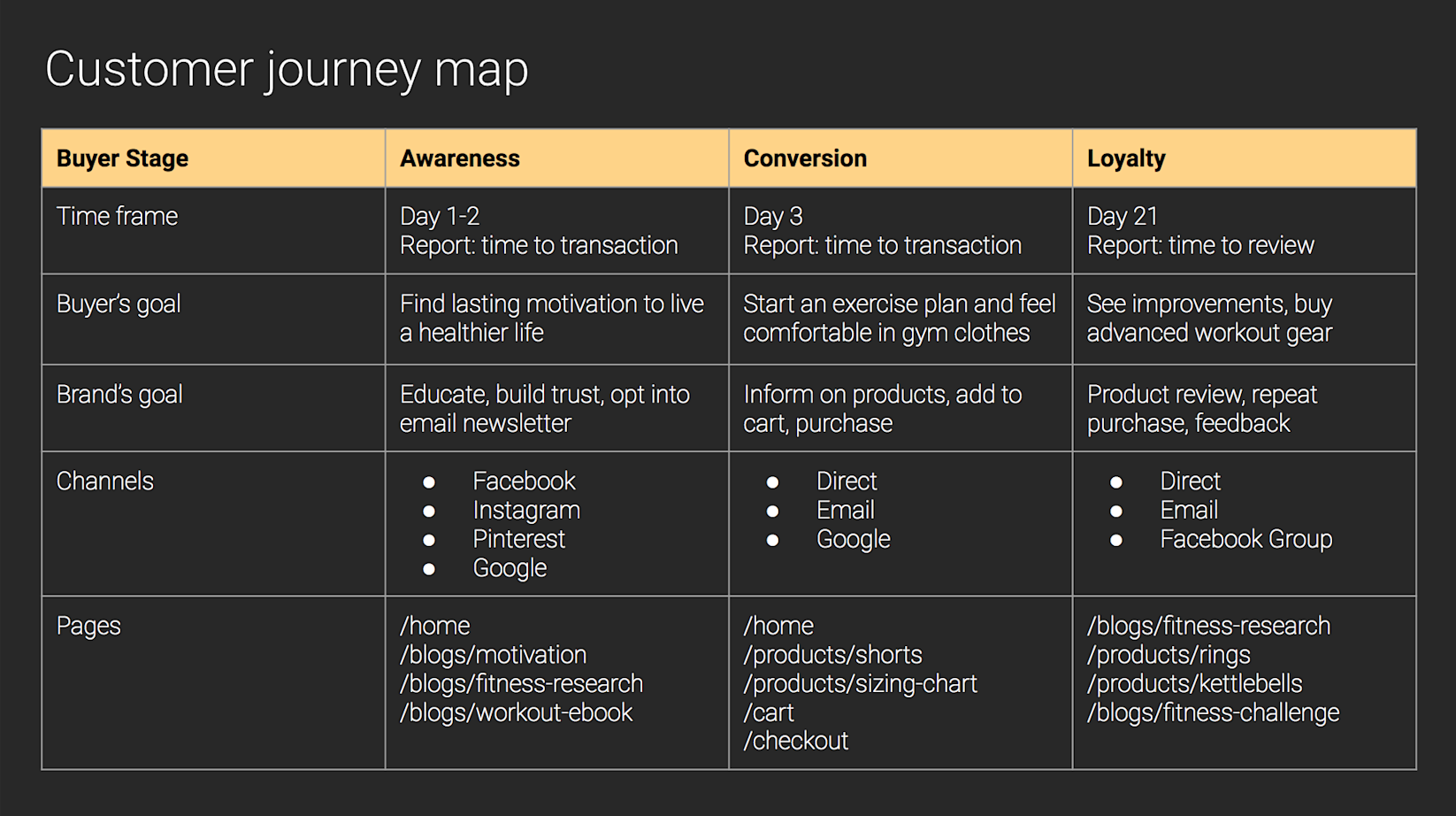
Customer journey maps should be adjusted on a monthly or quarterly basis to answer the question, “How can we add more value to our visitors at each step of this journey?” or “How can we help customers at each stage achieve their goals easier?”
Jetis currently leading the charge, leveraging consumer psychology along the buyer’s journey to generate $1 billion in ecommerce sales in their first year of business.
Liza Landsman, the CMO, explained:
“Jet’s target audience is represented across almost every age and socioeconomic cohort, although it over indexes among millennials who have children and are college-educated, and slightly over indexes on baby boomers.
“Our audience cares about value, they care about convenience, they want to make their life simple, and they care about service—all things we’re focused on profoundly.”
Jet has been able to utilize factors like convenience, simplicity, and service to drive sales. These factors stem from a profound knowledge of their customers, and not some amazing, last-ditch email campaign or fire sale.
From personas to a customer journey map through data
Before building your journey map(s), it is best tocreate customer personasto help you envision what your ideal customer might be going through when seeking your product.
This can be a lengthy process. Still, it’s worth putting the time in to get it right before defining the paths that different types of customers might take to purchase your products.
SilverPop, an IBM Company, explains that to create a good buyer persona, it helps to identify recent customers orloyalty programmembers who made a purchase on your website and interview them to understand::
- Why were they looking for the product that they bought on your website?
- How did they research the product?
- What criteria helped them make their purchase decision?
- Which of your competitors’ sites did they visit while evaluating products?
- Why did they choose your website?
- What was their experience like on your website when buying the product
- and what can be improved?
It’s best to start small in the beginning and prioritize the most critical customer personas for your business.
The real key, however, is using your existing data to map the customer journey based on psychological principles to drive more sales.
Step 1. Monitor your customer behavior through the funnel exploration and path exploration reports
Understanding how users move through your store is critical to producing sales that follow a psychologically informed model.
For example, why would sales be low if you’re offering a discount code to all first-time visitors? The offer (or,ability) might be great, but consumers still lack themotivationto buy. In this case, it doesn’t matter how much products are discounted.
This common scenario can be uncovered with thefunnel exploration report, which will allow you to select a path you’d like to look into, or thepath exploration report, which gives you a look into your user’s journey, and are both available insideGoogle Analytics.
Make sure to examinedifferent segmentsof users, whether it’s first-time visitors, returning visitors, purchasers, or create a custom segment for visitors with long session durations but no purchases:
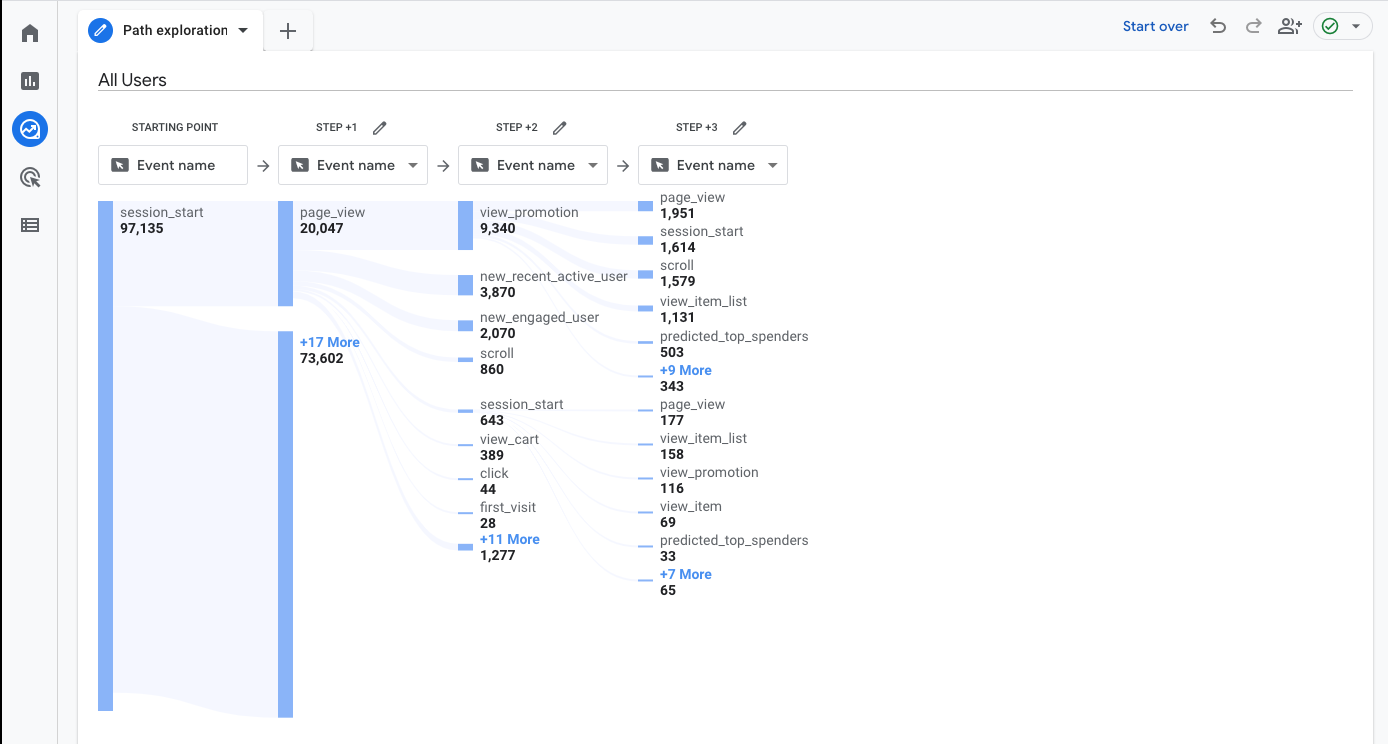
Look for trends, like specific drop-off points where hoards of users left your site without converting. Conversely, look for commonalities between behavior. What page do most first-time visitors view after landing on your homepage? In the first stage of a customer journey map, you will start to notice that most of these first-touch pages revolve around building awareness before driving conversions.
You can also installHindsighton your Shopify Plus store to record visitor sessions. You’ll get heat maps and also be able to see user behavior as they move from page to page.

Detailed session histories can generate ideas of which pages correspond to each stage of the journey.
For instance, your blog or story pages are often perfect jumping-off points to educate users.The Elephant Pantsuses their story page to build awareness, leveraging it as an external force to push consumers from one stage to the next.
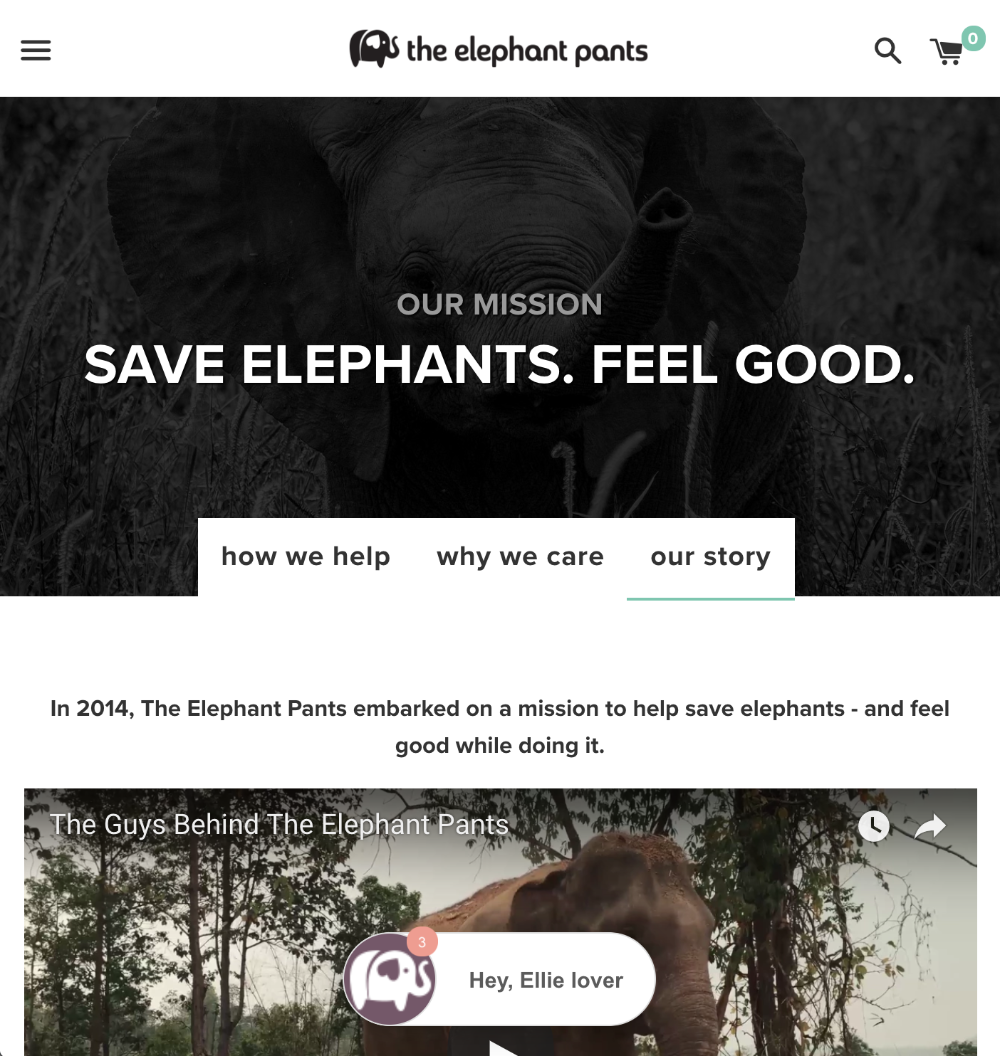
Live chat and coupon-based offers at the end of the story provide just the right trigger at the right time to help transition awareness to action.

Use thefunnel exploration reportand thepath exploration report在谷歌分析,更好地理解典型的al journeys people take on your site. Then, leverage each step as an opportunity to provide the right motivations and triggers to keep them in your funnel.
Step 2. Analyze the top conversion path report to see what platforms people use at each stage
Anomnichannel strategyormultichannel strategyis critical because ready-made buyers don’t just materialize on your website. Instead, it often requires multiple touchpoints along multiple channels or platforms before they eventually pull the trigger.
As a result, it’s also more critical than ever to optimize people’s experience as they move from one platform to the next.
People might find your business through a referral on social media. They might read your tweets or browse your Instagram. Then, they might head back to your site for more — all before handing over their credit card.
Knowing the typical paths on your site is one thing, but it’s another to understand when and why customers use different channels before buying. Be sure to note these different channels and their specific order sequencing before purchase.
If you notice that social plays a huge role in awareness, add that to your buyer’s journey. You can later tap into this data and share content on social that focuses on brand building rather than selling, likeRare Beauty:
If you’re a Shopify Plus merchant, you can access our custom Google Data Studio reports in our Data Analysis course to help you find your metrics that lead to a sale.
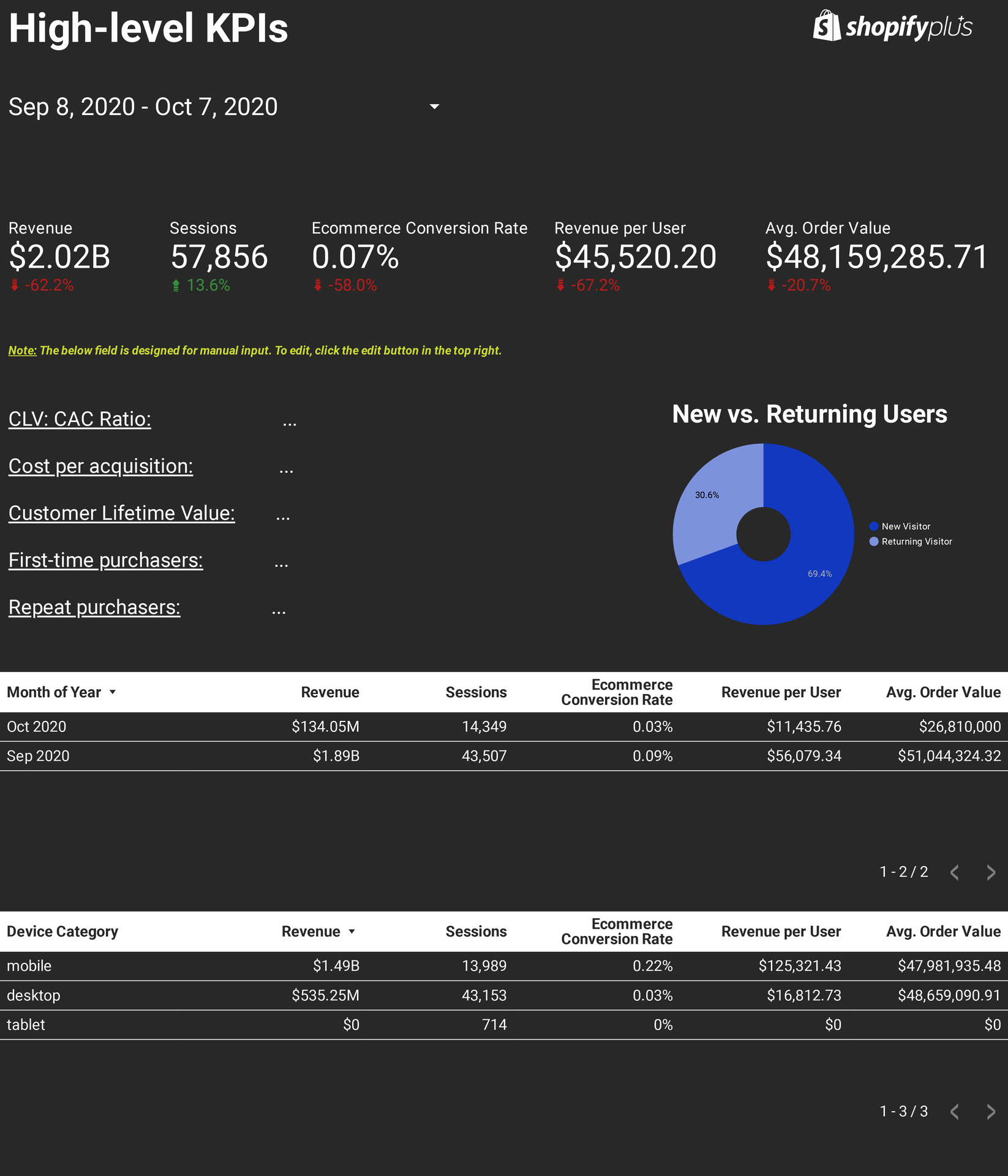
There you can see how many sessions the average user undertakes before making a purchase, and how many days it takes on average to make a purchase. You can further segment this by demographics or traffic source.
Step 3. Mold your funnel (i.e., customer journey) to the needs of your visitors
The decision to purchase ultimately comes down to one major thing: your relationship with your customers. Again, this means understanding consumer psychology and building a strong relationship by providing value at each stage of their journey.
The role of datais essentially an analytical version of the fifth habit in Stephen Covey’s7 Habits of Highly Effective People:
Seek first to understand, then to be understood.
Data analysis will help you uncover what your customer cares most about, then it’s your job to serve them the content, products, and offers in line with their desires.
If customers aren’t ready to buy, they won’t. And even if they are motivated, the wrong trigger or ability could limit their potential to slide down your funnel.
Only after mapping your customers’ existing journey, can you then test different types of content and offers at each stage. For example, test a storytelling email versus an offer as your email autoresponder when someone first signs up, or try split testing your remarketing campaigns with blog posts, “about us” videos, and offers.
Maybe your retention strategy would be more effective if you had a weekly storytelling email with a softer call to action or vice versa.
Offsite, apps like Shoelace forremarketing journeysorKlaviyofor email can guide this testing. Onsite, testing, and personalization platforms likeNostoalso integrate beautifully with Shopify Plus.
Now, it’s your turn.
As part of our Shopify Plus exclusive Merchant Acceleration program, we’ve put togetherCustomer Personas and Journey Mapping Templatesto map out each stage of the buyer’s experience align it with the wants and needs of your buyer personas:
The template contains three pre-loaded customer personas, but you can:
- Add your own customer images and persona profiles.
- Expand, edit, and duplicate the customer journey map to fit the data you’ve collected.
- Use the various parts of the above template in harmony to craft experiences that compel action at each stage.
Final thoughts
这是没有more important to understand the psychology behind consumer behavior.
Buying has never been more complex because there’s never been this number of platforms, channels, options, alternatives, or competitors.
If you want to grow your business, it’s time to take a deep look at your customer personas and their journey. The trick to dominating a market isn’t just clever advertising, but rather a habit of continuously deepening your understanding of your customer and striving to add more value to their lives.
Attention and sales are a side effect of doing this well. At the end of the day, the brand that can motivate the market most will win.
Common Questions About Ecommerce Customer Journey
What is a customer journey?
Customer journey refers to the path consumers take to purchase a product, as well as their experience post-purchase. Customer journeys aren’t linear and don’t have a set number of steps.
How do you analyze customer journey?
There are two main ways to analyze your customer’s journey: a quantitative approach and a qualitative approach. The former involves looking at your analytics to determine what steps your customers took before purchase, while the latter involves customer interviews.
What is a customer journey touchpoint?
A customer touchpoint is any point in which your customer engages with your brand. Touchpoints can be online, like viewing your product reviews, or offline, like visiting your store.
What is the customer journey map?
A customer journey map is the result of analyzing and diagramming the steps your customers go through pre- and post-purchase.
Why is a customer journey map important?
A customer journey map increases in importance relative to the number of touchpoints and complexity you introduce to the customer journey.
What makes a good customer journey map?
A good customer journey map tells you where your customers come from, how many days or visits it takes to move them from one stage of awareness to the next, and how each segment behaves.
Read More
- How to Amass +110k Micro-Influencers on Instagram & Increase Referral Sales 300%
- How to Overcome Your Daily Operational Frustrations to Focus on Future Growth
- Product Listing Ads [Gifographic]: How to Increase ROAS & Sales
- How Ecommerce Teams Get Buy-in To Sell More
- OmnichannelInventory Management: Solving Optimization Challenges to Increase Profits
- 5 Ways Brands Grow Revenue Using Text Message Marketing
- How to Reduce Fears and Bring Clarity to the Checkout
- How to Block the Ad Blockers & Whether You Should
- Returning Ecommerce Visitors: How to ‘Nudge’ Non-Buyers into Taking the Customer Leap
